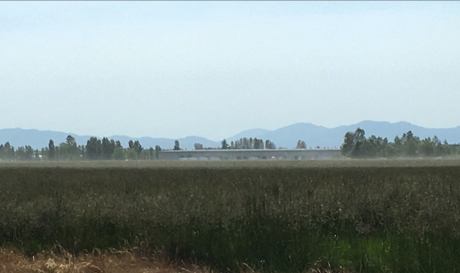
A pollen cloud over a field in the Willamette Valley
Pollen Is Flying Over Grass Seed Production Fields
Posted in General by Rhino Group
After surviving one of the wettest winters on record, the next hurdle for the 2017 grass seed crop is pollination. All eyes are on the climatic conditions for the next 2 -3 weeks as the weather appears to be ideal for the free flow of pollinating grasses. Anyone with an allergy can attest to this!
From beginning to end, pollination in a grass seed field can be spread out over a 21-day period or longer reaching a maximum known as peak anthesis. Pollination does not take place at the same time each year. In a cool spring, pollination is shifted later in the season while in a warm spring it is shifted earlier. The magnitude of the shift depends on the warmth or coolness of the season but typically the shift is only a few days to a week. Cloudy cool weather can extend the length of pollination while hot, dry weather will shorten the pollination period.
Too much rainfall in spring increases lodging and reduces pollination, causing reduced seed yield. High rainfall reduces pollen in the air as evident in pollen counts. When growers encounter high rainfall in mid to late May and the first two weeks in June, especially if there are few or no dry periods, there is a possibility that pollination is reduced. Timing is also important as late-maturing crops may avoid rain problems unlike early-maturing crops if the rain comes early.